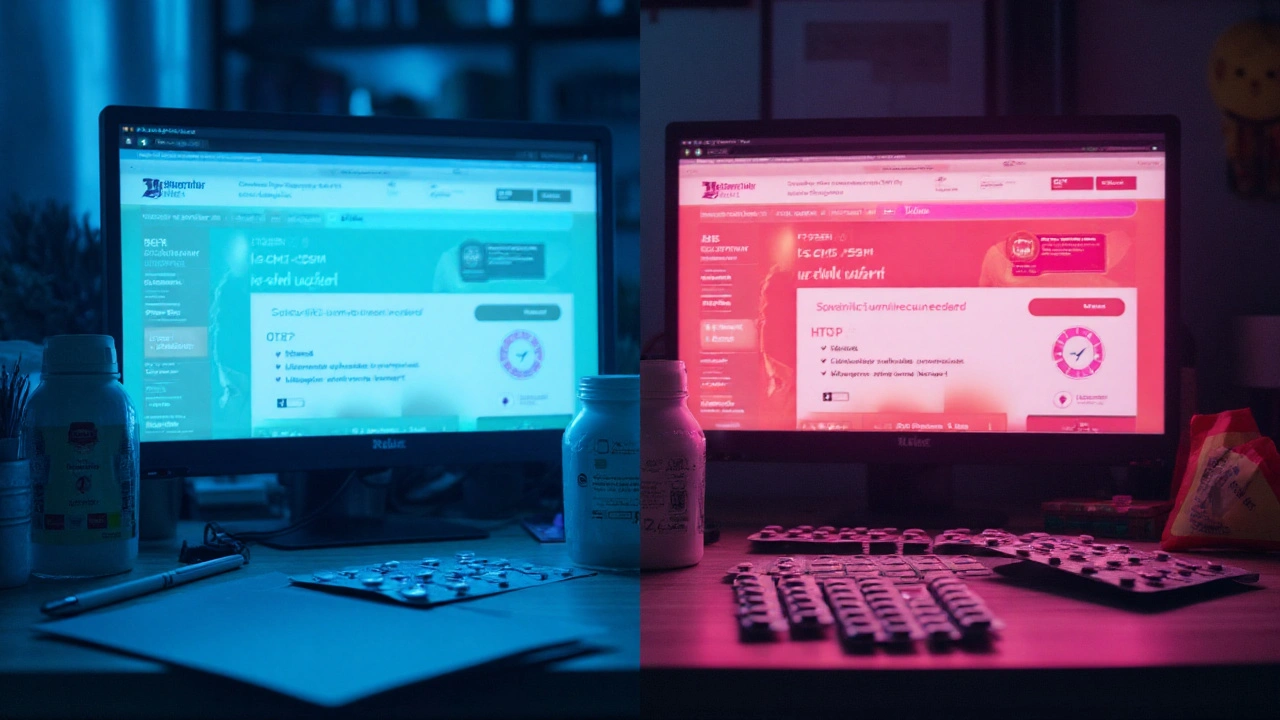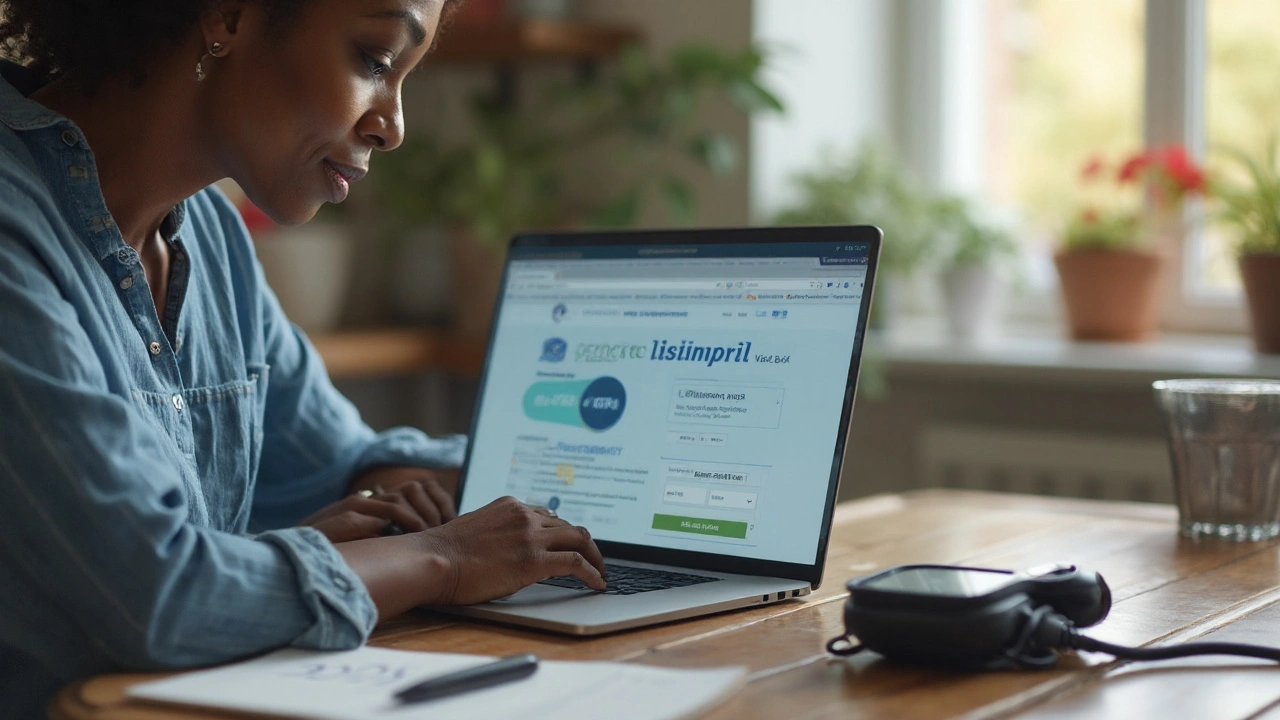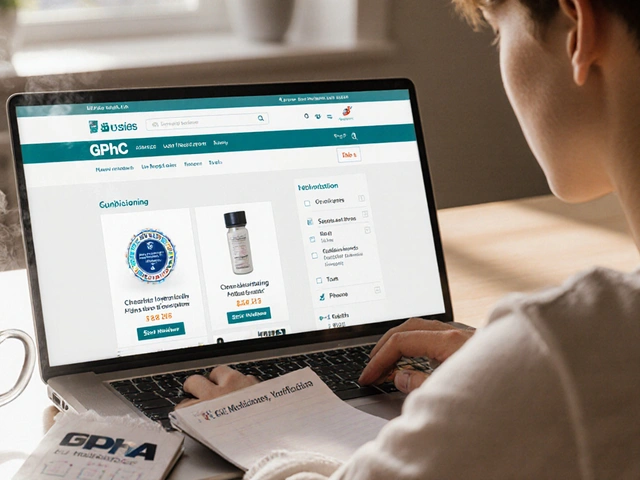You want to buy generic lisinopril online without paying silly money, and you want it done safely-no sketchy websites, no delays, no surprises. Sensible. Lisinopril is a prescription-only ACE inhibitor for blood pressure and heart failure, so there are a few rules to follow, but you can absolutely save time and money if you know how UK online pharmacies work. I live in Birmingham, and between my own family’s prescriptions and wrangling our cocker spaniel Bailey on delivery days, I’ve learned what’s worth it and what’s not.
What you’ll get here: clear steps to order from a legitimate UK pharmacy, typical prices you can expect in 2025, how online consultations work, safety must-knows (who should avoid it, common side effects, interactions), and practical ways to cut the cost-without cutting corners. If you’re in England, you’ll also see when the standard NHS charge beats private prices. If you’re in Scotland, Wales, or Northern Ireland, your situation is easier.
What you get when you buy lisinopril online (and how it works)
Lisinopril is one of the UK’s most prescribed medicines for high blood pressure and heart failure. It lowers blood pressure by relaxing blood vessels. The point of going online is simple: convenience, stock availability, and transparent pricing before you buy. Here’s how the journey usually goes on UK-registered sites:
- Prescription check: Because lisinopril is prescription-only, you need either an existing UK prescription (NHS or private) or you use the site’s “online doctor” service. A UK prescriber reviews your health questionnaire and history.
- Dispensing: A UK-registered pharmacy dispenses your medicine. You’ll see the premises’ General Pharmaceutical Council (GPhC) number and pharmacist name.
- Delivery: Most offer 24-72 hour delivery options. Standard shipping is often free or a few pounds.
- Refills: You can set reminders or repeat ordering-some sites sync with your GP if you choose an NHS repeat service.
Legit UK sites always ask for a prescription or assess you with a prescriber-led questionnaire. If a site offers lisinopril with “no prescription needed,” close the tab. That’s illegal in the UK and risky.
Quick benefits of buying online:
- Convenience: Order from your sofa and avoid queues. Handy if mobility, time, or transport is an issue.
- Price transparency: You can compare the medicine price, the prescriber fee (if any), and delivery before you pay.
- Stock: If your local pharmacy is out, online may have the strength you need.
Who is this route best for? People who already know their dose, need repeats, or can’t easily get to a pharmacy. If you’re brand new to lisinopril, you can still use online services-just expect a bit more back-and-forth during your first clinical review.
Real prices, prescriptions, and delivery: what to expect in the UK (2025)
Pricing has three parts:
- Medicine price: The actual cost of generic lisinopril tablets (usually cheap).
- Prescriber fee: Charged if you use an online consultation instead of uploading your own prescription.
- Delivery: Standard vs. tracked or next-day.
In England, NHS prescriptions have a standard per-item charge (listed by the NHS as just under £10 in 2024-2025). In Scotland, Wales, and Northern Ireland, NHS prescriptions are free. If you get lisinopril on the NHS, you pay the standard charge in England or nothing in the rest of the UK-no extra “drug price.”
If you go private online (no NHS script), you’ll see a breakdown. Generic lisinopril is inexpensive to manufacture; the private cost is often a few pounds for 28-56 tablets, but online doctor fees and delivery can push the total higher than the NHS charge in England. For some people-especially if you need several meds each month-a Prescription Prepayment Certificate (PPC) in England can save money over time.
| Route | What you pay | Typical 2025 outlay for 1 item | Pros | Watch-outs |
|---|---|---|---|---|
| NHS script (England) | Standard per-item charge | Just under £10 | Clinically monitored; predictable cost | Need GP approval and time for repeats |
| NHS script (Scotland/Wales/NI) | £0 per item | £0 | Free; easy repeats | Regional eligibility applies |
| Private online with your own prescription | Drug price + delivery | ~£3-£8 drug + £0-£4 delivery | Often cheaper than online consultation | Still may exceed NHS charge in England |
| Private online with online doctor | Drug + prescriber fee + delivery | ~£3-£8 drug + £10-£25 consult + £0-£4 delivery | Fast; all-in-one service | Usually pricier than NHS |
| Local private pharmacy (walk-in) | Drug + private Rx fee | Varies; sometimes low | Immediate pickup | Must bring a valid private Rx |
These are indicative figures I see in 2025 across UK providers; your final price depends on strength, pack size, brand vs generic, delivery speed, and the pharmacy’s fees.
Pack sizes and strengths you’ll see:
- Common strengths: 2.5 mg, 5 mg, 10 mg, 20 mg, 30 mg, 40 mg
- Common packs: 28, 30, 56, 84 tablets (28 and 56 are most common for once-daily dosing)
Quick ordering checklist:
- Check the pharmacy is on the GPhC register (the pharmacy premises number should be visible).
- Look for a UK address for the dispensing pharmacy and the superintendent pharmacist’s name.
- If you don’t have a script, use a site with a UK prescriber. They should ask about your medical history, kidney function, and other meds.
- Compare the total cost: medicine + any prescriber fee + delivery vs. your NHS charge or PPC.
- Pick delivery that suits your schedule. Tracked delivery helps if your area has parcel theft.
Delivery times: Standard post usually 2-3 working days; next-day cut-offs are often 3-5 p.m. I time my orders around school runs and our dog’s walk-no one likes a missed parcel card.
Safety first: who should avoid lisinopril, side effects, and interactions
Lisinopril is effective and widely used, but it needs respect. In the UK, NICE and NHS guidance recommend checking kidney function and potassium before starting and after dose changes, especially in the first 1-2 weeks. This is routine and helps catch rare but serious issues early.
Who should not take lisinopril (or should get specialist advice first):
- Pregnancy or planning to conceive: ACE inhibitors can harm the fetus. Use reliable contraception; switch to pregnancy-safe options if needed. Let your prescriber know immediately if you become pregnant.
- History of angioedema (face/lip/tongue swelling), especially with ACE inhibitors.
- Severe kidney artery narrowing (bilateral renal artery stenosis) or a sudden large drop in kidney function after starting an ACE inhibitor.
- Concurrent aliskiren in diabetes, or ACE inhibitor + ARB combination (generally avoided).
Common side effects:
- Dry, tickly cough (can show up weeks in): Not dangerous but annoying. If it persists, doctors often switch to an ARB like losartan.
- Feeling dizzy, especially after the first doses or dose increases: Take it at night, stand slowly, keep hydrated (but not excessively).
- Headache, tiredness, or changes in taste: Usually mild and settle.
Serious but rare:
- Angioedema: Swelling of lips/tongue/face, or trouble breathing. Call emergency services.
- High potassium (hyperkalaemia): Can cause weakness or irregular heartbeat; picked up on blood tests.
- Kidney function changes: Usually small and acceptable at first, but large drops need attention. That’s why bloods matter.
Interactions that matter:
- Other blood pressure meds: Your doctor may combine them, but doses get adjusted. Be cautious with diuretics at the start to avoid dizziness.
- NSAIDs like ibuprofen, especially if dehydrated: This mix can strain kidneys. Use the lowest dose for the shortest time or choose paracetamol instead when possible.
- Potassium boosters: Potassium supplements, salt substitutes with potassium, or potassium-sparing diuretics (e.g., spironolactone, eplerenone) can push potassium too high. Many people use ACE inhibitors with spironolactone but require regular blood tests.
- Lithium: ACE inhibitors can raise lithium levels. Needs close monitoring or a different plan.
Simple safety plan you can stick to:
- Before starting or upping the dose: Baseline kidney function and potassium blood test (arranged by your GP or the online prescriber).
- After 1-2 weeks: Repeat bloods to check all is well.
- At 3-6 months, then annually: Routine monitoring if stable, or more often if you have kidney disease, diabetes, or you’re on interacting meds.
Practical tips from real life:
- First week habit: Take it at the same time each day, ideally evening if you get light-headed.
- Hydration: Drink normally. Avoid “chugging extra water” unless advised-you can swing sodium and feel worse.
- Illness rule: If you get vomiting/diarrhoea or can’t keep fluids down, contact your GP or pharmacist about “sick day rules” for ACE inhibitors.
- Alcohol: Keep it modest until you know how you feel; both alcohol and lisinopril can lower blood pressure.
Citations and guidance: UK NICE hypertension guidance outlines first-line options and monitoring; NHS patient info covers side effects and sick day rules; the MHRA advises on medicine safety and reporting side effects via the Yellow Card scheme. If you ever feel unsure, ask your pharmacist-they’re brilliant at practical checks.

Compare your options, save money, and order with confidence
When you’re choosing where to order, weigh safety, speed, and total cost-not just the “from £X” headline.
How online compares to local pharmacy:
- Online is best when: You need convenience, your local store is out of stock, or you want an all-in-one online consultation.
- Local pharmacy wins when: You have an NHS script in hand and want same-day pickup, or you prefer face-to-face advice.
How ACE inhibitors compare to ARBs (for cough-prone folks):
- ACE inhibitors (like lisinopril): Proven, cost-effective. Cough is the main reason people switch.
- ARBs (like losartan, candesartan): Similar blood pressure control with lower cough risk. May be slightly pricier, but often still affordable on the NHS.
Money-saving rules of thumb:
- If you’re in England and only take lisinopril each month: The NHS per-item charge is usually cheaper than a private online consult.
- If you take 3+ regular items per month: Consider a Prescription Prepayment Certificate-often pays for itself.
- Stick to generics: Brand names like Zestril or Prinivil don’t improve control, but they do hike price.
- Choose 56-tablet packs if your regimen is stable: Fewer deliveries and sometimes better per-tablet value.
Legitimacy checklist (5 quick signals):
- GPhC pharmacy number on the site, and it matches the GPhC register.
- Named superintendent pharmacist and UK dispensing address.
- Clear UK prescriber process-no “no prescription” claims.
- Transparent fees before checkout.
- Customer support with realistic hours, not 24/7 chatbot only.
Ethical call to action: Use a UK-registered online pharmacy or your NHS repeat service. Upload your prescription if you have one, or use a UK prescriber’s assessment if you don’t. Never buy from sites that skip the prescription step.
A quick personal note: I’ve had months where the choice was between chasing a GP appointment or getting an online consult in the evening after dinner with Nolan Thatch. The online route saved the day, but I still keep my annual reviews with the GP for blood tests. Convenience is great; clinical checks keep you safe long-term.
FAQ
Can I get lisinopril without a prescription in the UK? No. It’s prescription-only. Any site selling it without one is operating outside UK law. Stick to GPhC-registered pharmacies with UK prescribers.
How fast is delivery? Standard is usually 2-3 working days. Many offer next-day if you order before mid-afternoon. Delays can happen if the prescriber needs more info or you’re starting treatment and blood tests are needed.
Is lisinopril safe if I’m pregnant? No-ACE inhibitors are not safe in pregnancy. Speak to your doctor right away about alternatives.
What about that annoying cough? It’s common with ACE inhibitors. If it bugs you, ask about switching to an ARB like losartan. Don’t stop on your own without a plan.
Can I drink alcohol? In small amounts, yes, but alcohol can lower blood pressure too. Go easy until you know your body’s response.
What dose will I get? Typical adult doses are 10-20 mg once daily for blood pressure, but some start at 2.5-5 mg, especially if you’re on diuretics or have kidney concerns. Your prescriber will set this.
Do I need blood tests? Yes-before starting or increasing, then after 1-2 weeks, then periodically. This checks kidney function and potassium.
Is generic as good as brand? Yes. Generics meet the same MHRA quality standards and work the same way.
Next steps and troubleshooting
Pick your path based on your situation:
- New to treatment: Use your GP or an online prescriber who will arrange starter monitoring and blood tests.
- Stable on lisinopril with repeats: NHS repeat service (especially in Scotland/Wales/NI) is likely cheapest. In England, compare your NHS charge vs. private+delivery costs.
- Need it fast: Use a GPhC-registered online pharmacy with next-day delivery and upload your prescription to skip prescriber fees.
- Price shock: Add up the total cost (drug + fee + delivery). If it’s more than the NHS charge in England or free in your nation, switch route.
Common snags and fixes:
- Website wants more info: That’s normal. Provide your current meds, any kidney issues, and recent blood test dates. It speeds approval.
- Stock issues: Ask for the same dose in a different pack size or use two strengths to make up your dose (e.g., two 5 mg for 10 mg), if your prescriber agrees.
- Side effects early on: Dizziness or a mild headache is common. Take at night, rise slowly, and call your GP or pharmacist if it doesn’t settle.
- Persistent cough: Message your prescriber about an ARB switch. Many people find that solves it.
- Cramping or irregular heartbeat: Could be high potassium-seek advice promptly, especially if you’re on potassium-sparing meds.
Final nudge: Choose a UK-registered pharmacy, stick to generics, compare the true total price, and keep up with your blood tests. Do that, and buying lisinopril online becomes the easiest part of your health routine-no drama, just the right tablets arriving when you need them.





Queen Flipcharts
August 22, 2025 AT 01:46Check the GPhC number on the site first and you cut out 90% of dodgy sellers right away.
Make sure the dispensing address is in the UK and that a named superintendent pharmacist is listed on the site.
Saving a few pounds is pointless if you end up with delayed delivery, wrong strength, or no clinical checks.
Upload your NHS prescription if you have one and skip the prescriber fee; that simple move often beats private consults in England.
Use tracked delivery near parcel-prone areas so you actually get what you pay for.
If you live in Scotland, Wales, or Northern Ireland, the free NHS route usually wins on cost and continuity of care.
Keep bloods in the loop with your GP even if you use online repeats; clinical oversight is not optional.
Jason Peart
August 23, 2025 AT 00:00ordered once, saved a ton, but messed up the dose entry - double-check everything before you hit pay lol
Hanna Sundqvist
August 23, 2025 AT 13:53Sites that say "no prescription needed" are the ones to avoid, period.
If a site operates outside UK rules they will also cut corners on storage and expiry checks.
Keep screenshots of your order confirmation and the pharmacy contact info in case a dispute starts.
Sometimes the prescriber asks for a recent blood test date because they actually care about kidney safety - that is a good sign, not a nuisance.
Watch delivery windows and choose next-day when you are down to your last pills; delays happen more than the sites admit.
Karen Ballard
August 24, 2025 AT 03:46Love the checklist - it’s tidy and useful 😊
One tiny addition is to screenshot the GPhC entry that matches the number on the site; it’s quick proof if you need to report anything.
Also add a reminder in your phone calendar for the 1–2 week bloodcheck after starting or changing doses 🩺
Gina Lola
August 24, 2025 AT 17:40Long-term perspective matters more than the headline price.
Generic lisinopril being cheap does not mean the rest of the service can be cheap too - prescriber quality, proper dispensing, and robust cold-chain or storage protocols for other meds are where the real value is.
When evaluating online pharmacies, check for documented audit trails like visible batch numbers and expiry dates on the dispensed labels if they show sample photos; that’s a signal of process discipline.
For people with polypharmacy there is a transactional cost to switching suppliers frequently - every time you change dispensers you risk subtle formulation differences, labeling quirks, and inconsistent patient information leaflets that cumulatively increase cognitive load and slip-ups.
Consider the ergonomics of your repeat process: a site that supports 56-tablet packs, synchronized repeats, and a clear repeat-refill cadence will reduce the friction of adherence.
Also, the interaction profile with NSAIDs and potassium-sparing agents is not academic - it shows up in primary care often as confused lab results and readmissions for electrolyte problems; a pharmacy that flags combinations on checkout prevents those downstream costs.
For clinically complex patients, use the online prescriber route only if they explicitly arrange baseline and 1–2 week follow-up bloods - a cursory form check is not sufficient for people with CKD or heart failure.
Document everything in your own records: medication list, start date, prescriber name, batch number if available, and dates of blood tests.
The marginal savings from a cheaper private consult vanish if you end up seeing the GP for a repeat blood test or an adverse effect; optimize for total cost of care rather than lowest sticker price.
Also archive the pharmacy’s privacy policy and complaints process in case supply chain issues or adverse events require escalation; a transparent complaints route is another small indicator of legitimacy.
Some people will try to mix and match strengths to hit a dose while saving money, which is fine when clinically approved, but stick to prescriber guidance and get it written on your record to avoid confusion later.
Pharmacies that offer text or email reminders for lab monitoring and medication reviews genuinely reduce risk, so factor that into your value calculus.
For those on multiple antihypertensives, ensure your GP or prescriber has your full list - online forms sometimes miss OTC meds or supplements that matter, like potassium substitutes.
Remember that treatment adherence is a system thing: predictable supply, simple dosing, and clear monitoring pathways beat the occasional bargain on a dodgy site.
Finally, if switching meds because of cough, do it with a plan - an ARB switch is straightforward but needs a brief review and monitoring like any change.
Overall, pick the path that preserves continuity and minimizes cognitive overhead; that’s how you save money and health in the long run.
Leah Hawthorne
August 25, 2025 AT 07:33Good points about continuity and total cost.
Keep one concise folder or note in your phone that lists current meds, doses, last blood test dates, and GP contact - this speeds up online prescriber approvals and reduces back-and-forth.
When you upload a private prescription, verify the scanned image is clear and the patient name exactly matches your account details.
Mixing two tablet strengths to reach a dose is fine when prescriber-approved, and it’s helpful to mention that to the dispensing pharmacist in the comments so they can label clearly.
If you experience lightheadedness after the first dose, lie down and hydrate, then contact your pharmacist or GP rather than stopping abruptly.
For people taking lithium or potassium-sparing diuretics, insist on documented monitoring intervals from whoever prescribes the lisinopril.
Lastly, set a single reminder for the 1–2 week blood test and one for a 3-month review; automated systems are good but manual reminders save lives too.
Brian Mavigliano
August 26, 2025 AT 11:20Follow the paperwork, not the marketing bluster.
There is a theatrical allure to a "free delivery" banner and a low tablet price, but the system-level costs emerge later in follow-ups and lab work.
People treat medicine like a commodity and forget it’s a relationship with a health system.
Consolidate your prescriptions where you get good counseling and reliable labeling rather than hopping between bargain-bin vendors.
Also be suspicious of an online doctor who breezily approves a drug without specifying the baseline blood tests they used to make that decision.
Emily Torbert
August 27, 2025 AT 15:06Totally agree with consolidating supplies and keeping good records.
Small practical tip: screenshot prescription confirmations and the prescriber note and save them in a folder named after the med - that made renewals painless for me.
When side effects start, message the prescriber and summarize the timeline and any recent OTCs taken; presenting info clearly speeds triage.
Rashi Shetty
August 29, 2025 AT 08:46Clinical responsibility is not optional - document everything and adhere to monitoring schedules. 😊
Pregnancy must be flagged loudly on any form; ACE inhibitors are absolutely contraindicated in pregnancy and need immediate cessation if pregnancy occurs. 🤰
Pharmacists are your frontline allies; use them as the quick check before any medication change.
Keep a printed list of all meds if you travel between regions in the UK where prescription rules differ; it avoids administrative hurdles.
Use the Yellow Card scheme to report adverse events; it helps national surveillance and informs future guidance. 📝
Yojana Geete
August 31, 2025 AT 02:26Start with the prescriber’s instructions and treat them like gospel until a clinician advises otherwise.
It’s theatrical to picture online pharmacies as either saints or villains; the truth is granular and messy.
When I switched to online repeats during a busy season, I still scheduled a face-to-face blood test window with my GP to keep continuity intact.
Make sure the online prescriber writes the dose clearly on the record rather than burying it in a PDF note; I had a near-miss once because of ambiguous labeling.
If you get a cough after a few weeks, document when it started relative to dose changes and mention any licking or throat irritation separately in the message to the prescriber.
Also, track your blood pressure readings at home and upload a few readings when you ask for a medication change; objective data speeds decisions.
Finally, don’t treat delivery as a one-off logistic problem - it’s part of adherence, so optimize it deliberately.
Jason Peart
September 4, 2025 AT 17:33i once mixed up mg and mcg on a form and nearly freaked, so triple-check numeric fields and units every time - saved my life lol
Hanna Sundqvist
September 7, 2025 AT 01:06People underestimate how often forms and fields vary across sites - guard against autopopulate mishaps and browser autofill inserting old addresses or phone numbers.
Always preview the final order summary before payment so you catch any strength or quantity mistakes.
If a site forces you into a default pack size you don’t want, call them to request a change rather than cancelling and starting over; it’s faster and reduces error risk.
Brian Mavigliano
September 19, 2025 AT 18:40Bottom line: process discipline beats price tags every time.
Systems, not slogans.